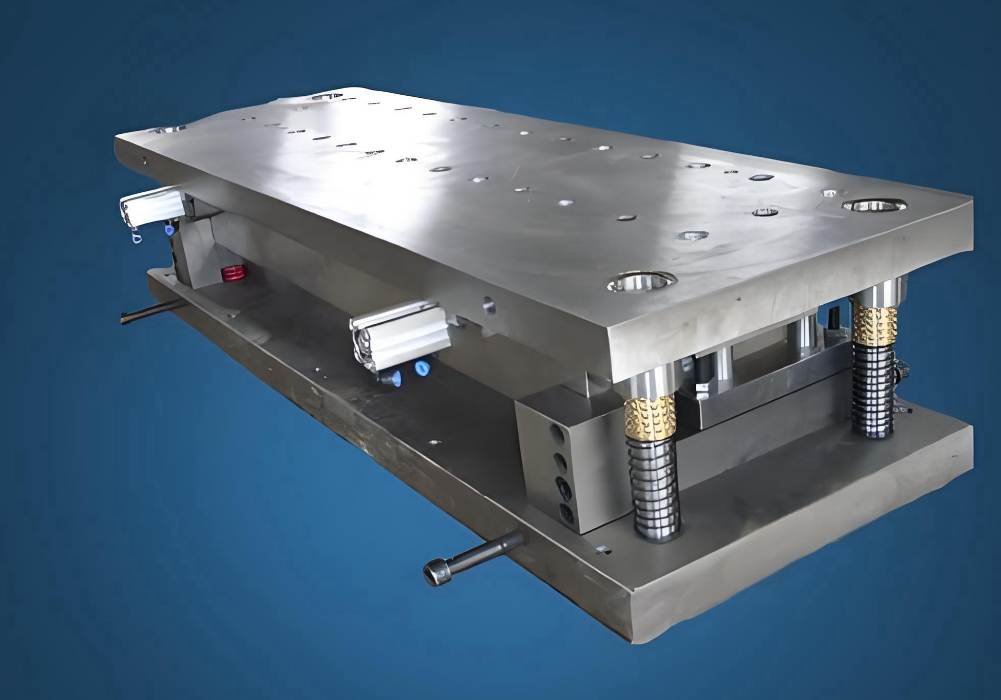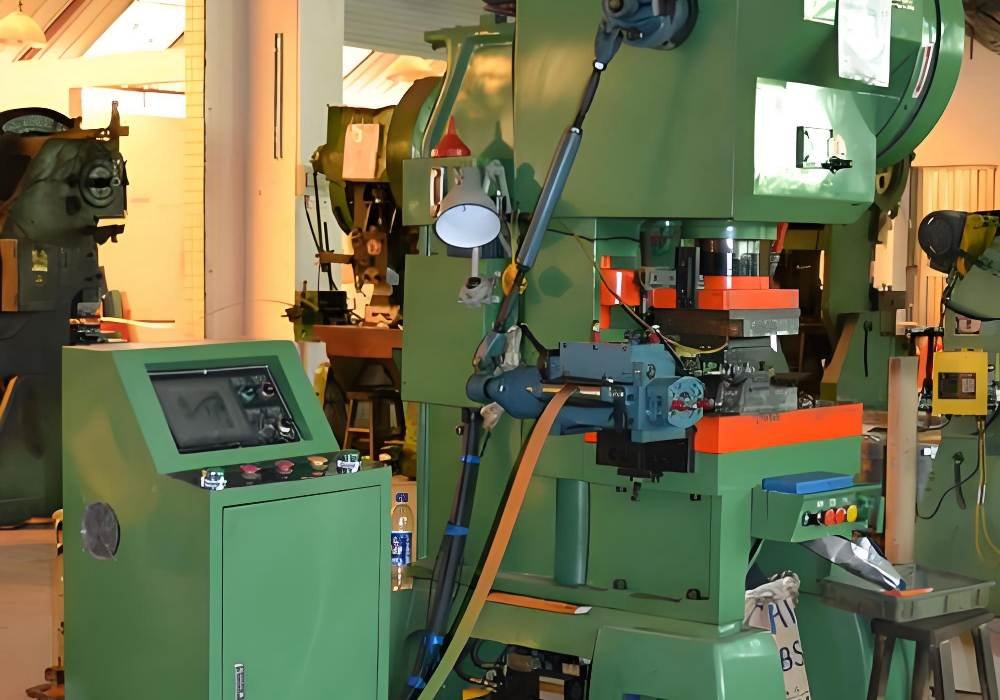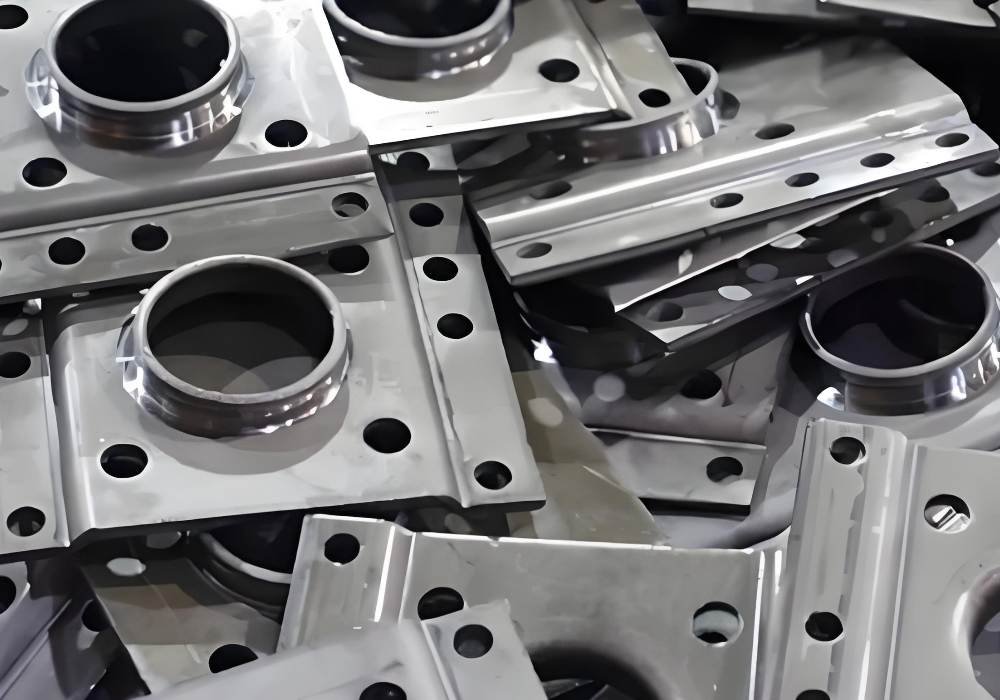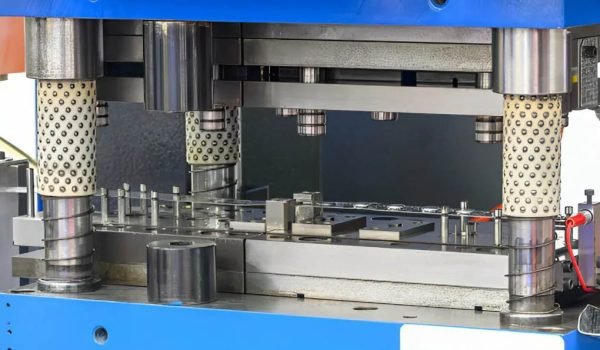Progressive die stamping is a great way to get the precision and efficiency that are essential in modern production. This process has shown to be a reliable choice for metal forming, offering unmatched precision and speed. Thanks to its advanced design, progressive die stamping provides extraordinary speed and precision, which can considerably improve your manufacturing capacity.
So, how exactly does progressive die stamping achieve such remarkable results? What are the key factors that contribute to its effectiveness, and how can you implement best practices to maximize its benefits? We’ll explore these questions and more below.
Overview of Die Stamping
Basically, die stamping is the process of forming metal with carefully made dies. These custom tools are made to press and shape metal into exact shapes that meet exact requirements. This process is very flexible, which is why it is used in many fields, such as electronics, consumer goods, and the auto industry.
Die stamping is a basic method in current production because of its wide uses and great degree of accuracy it provides. It is popular with manufacturers who need consistent and reliable results because it is very customizable. In fact, it is a key part of making a wide range of things, from complex computer parts to long-lasting car parts.
Mechanism of Progressive Die Stamping
Before getting into the details about die stamping, we must understand its mechanism. Progressive die stamping is a process where a continuous strip of metal is seamlessly fed through a series of stations within a single die setup. Each station is meticulously designed to carry out a specific task, such as cutting, bending, or punching.
As the metal strip moves forward through the stations, it undergoes a series of transformations, gradually taking shape with each step. By the time it reaches the end of the line, the metal strip has been expertly crafted into the final product. This method allows for precise and efficient production, making it highly valuable in high-volume manufacturing settings.
With each motion of the die, the metal advances closer to its final form, effectively synchronizing multiple tasks into one seamless operation. This not only boosts productivity but also ensures consistent and high-quality outputs.

Components of a Progressive Die
Being familiar with the different parts of a progressive die is important for fully knowing how it works.
Let’s walk through the key parts together:
- Punch: This component is pivotal in the die’s operation, tasked with piercing and shaping the metal. As it descends, the punch precisely impacts the metal strip, executing cuts or shapes as required for the process.
- Die Block: Serving as the foundation of the die setup, the die block contains the die cavity. It is carefully engineered to match the shape and requirements of the final product, ensuring each operation is carried out with exact precision.
- Stripper Plate: One might think of this as the steadying hand of the operation. The stripper plate holds the metal strip firmly in place, preventing it from shifting or moving while it’s being processed. This ensures accuracy at every stage of the stamping sequence.
- Shank: The shank is responsible for securely attaching the die to the press. It is the critical link that ensures the die is properly aligned and stable during operation, contributing greatly to the overall reliability and efficiency of the stamping process.
- Pilots: These ensure the metal strip remains perfectly aligned at each station. Pilots guide the strip into the correct position as it moves through the progressive die, ensuring that each operation is carried out just as planned.
- Blanking Station: The blanking station is where it all begins. Here, the initial piece, or blank, is cut from the metal strip. This piece then moves through the various stations to be shaped and refined into the final product.
Progressive Die Stamping: The Process Flow
What is the process of progressive die stamping in the manufacturing industry? Let’s explore this domain below:
Step 1: Feeding
First and foremost, the metal strip is carefully fed into the press. This step sets the stage for everything that follows. It’s significant to ensure that the metal strip is aligned correctly so that each subsequent operation unfolds seamlessly. Any misalignment here can ripple through the entire process, so meticulous care is taken to start off on the right foot.
Step 2: Progression through Operations
As the process kicks off and the metal strip advances, it moves methodically through various stations in the die. Each station is responsible for executing a specific operation, whether it’s cutting, bending, or piercing. This organization into distinct tasks allows each detail of the final product to be shaped incrementally and with high precision.
The design of these operations is carefully synchronized to enhance efficiency and accuracy, ensuring each aspect of the part is crafted flawlessly.
Step 3: Formation
With each operation that the strip undergoes, the part gradually begins to form. This transformation happens in a series of carefully orchestrated stages, with different sections of the metal being manipulated and formed as needed.
Step 4: End Product
Finally, after the part has passed through all the necessary stations and has taken on its intended shape and form, it reaches the end of its process flow. Here, the completed part is delicately separated from the remaining metal strip. At this point, it emerges as a fully realized component, ready to be put to use.
The process from raw material to finished product is a testament to the precision and efficiency of the progressive die stamping process.

Applications of Progressive Die Stamping in Various Industries
Progressive die stamping is a marvel of manufacturing that touches many corners of our world, from the cars we drive to the medical devices that safeguard our health. It’s fascinating to think about how this versatile process quietly supports a broad range of industries, ensuring that parts are manufactured with precision and reliability.
We will explore some of the key industries where progressive die stamping truly shines.
Automotive
The importance of progressive die stamping can’t be overstated in the automotive industry. This process is instrumental in crafting everything from body panels to connectors and other essential components. With its reputation for precision, it’s the go-to method when accuracy and durability are not just desired but necessary.
Major car manufacturers rely on progressive die stamping to ensure their components meet stringent safety and performance standards.
Electronics
Moving on to electronics, the stakes are just as high. Here, progressive die stamping is used to create complex parts such as connectors and lead frames. These parts must be highly detailed and accurate, and this is where progressive die stamping excels.
This process has been used by companies like Intel to make parts that make electronic devices work perfectly.
Medical Devices
When it comes to medical devices, precision is paramount, and progressive die stamping rises to the challenge. This approach is used to produce an array of components, including surgical tools and diagnostic instruments, all adhering to strict medical standards.
Most medical companies trust progressive die stamping to maintain the reliability and accuracy that is vital for patient safety and effective treatment.
Aerospace
The aerospace industry also benefits immensely from progressive die stamping. In this field, parts need to be both lightweight and durable, able to withstand extreme conditions. That’s no small feat.
Notably, approximately 65% of aerospace component manufacturers utilize progressive die stamping to achieve the precision and strength required in this sector. With manufacturers like Boeing using progressive die stamping, they can produce parts that meet the rigorous demands of aeronautics, whether for commercial or military applications.
Renewable Energy
When it comes to renewable energy, progressive die stamping is a game-changer. This manufacturing process is vital for creating components for solar panels and wind turbines. Imagine solar panels processing sunlight and wind turbines harnessing wind power efficiently—these impressive feats are made possible because of durable and efficiently produced parts.
Companies use progressive die stamping to produce frames and mounting systems that ensure the stability and efficiency of solar panels over time. Similarly, wind turbine manufacturers depend on this method to craft robust components that meet strict industry standards for reliability and performance.
Telecommunications
Now, let’s turn to telecommunications. The devices and equipment that keep us all connected owe a lot to progressive die stamping. This process is used to manufacture high-precision parts such as connectors, shielding, and frameworks. These components need to meet very tight tolerances to ensure the equipment they go into performs reliably.
Companies like Cisco, for instance, use these finely crafted parts in their network connectivity devices, contributing to the high performance and dependability that we’ve come to expect from modern telecommunications networks.

How Does Progressive Die Stamping Differ from Other Metal Forming Techniques?
Progressive die stamping is different from other ways of shaping metal because it is fast, accurate, and can be done automatically. It combines several steps into a single die, while traditional methods like blanking or bending need more than one setup and set of processes. While moving through the die, the metal strip goes through many changes, including being cut, punched, and bent all at the same time. This cuts down on working time and mistakes.
Progressive die stamping may cost more to set up at first, but it saves money in the long run. This method is great for making a lot of things because it is very automated, which lets parts be made quickly and consistently.
Progressive die stamping is very accurate because the dies are made to keep errors very small. This makes sure that every part meets all the requirements, which can be hard to do with other methods like deep drawing.
Conclusion
Although each metal forming method has its own uses and advantages, progressive die stamping stands out for its speed, accuracy, and efficiency. Its ability to combine several tasks into a single die speeds up output and lowers the chance of mistakes. This makes it perfect for making a lot of things at once, where accuracy and low cost are very important.
Progressive die stamping is often the best way to improve production processes in factories. This is because it saves money in the long run and is reliable.
So, are you ready to improve the speed and accuracy of your manufacturing? You might want to add progressive die stamping to your workflow right now. Get in touch with us to find out more about how this method can change your production line and help your business grow!




